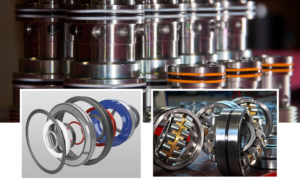SMI O-ring Solutions

O-Rings are one of the most common seals used in mechanical design today. SMI offers Hi-Performance O-ring compounds for a wide range of applications and industries. Automotive, Chemical, Oil & Gas, Healthcare, Petroleum, Food & Beverage and Hydrocarbons industries all use Hi-Performance seals. SMI offers them in standard and custom sizes for your application. Our FFKM O-rings provide excellent resistance to petroleum products, chemicals and temperatures high and low. They are also resistant to compression set, tear and abrasion, our SMI 204 is FDR compliant with certification 21 section 177.2600.
O-Ring History
The first patent for the O-ring is dated May 12, 1896, as a Swedish patent. J. O. Lundberg, the inventor of the O-ring, received the patent. The US patent for the O-ring was filed in 1937 by a then 72-year-old Danish-born machinist, Niels Christensen. In his previously filed application in 1933, resulting in Patent 2115383, he opens by saying, “This invention relates to new and useful improvements in hydraulic brakes and more particularly to an improved seal for the pistons of power conveying cylinders.” He describes “a circular section ring … made of solid rubber or rubber composition”, and explains, “this sliding or partial rolling of the ring … kneads or works the material of the ring to keep it alive and pliable without deleterious effects of scuffing which are caused by purely static sliding of rubber upon a surface. By this slight turning or kneading action, the life of the ring is prolonged.” His application filed in 1937 says that it “is a continuation-in-part of my copending application Serial No. 704,463 for Hydraulic brakes, filed December 29, 1933, now U. S. Patent No. 2,115,383 granted April 26, 1938”.
Soon after migrating to the United States in 1891, he patented an air brake system for streetcars (trams). Despite his legal efforts, the patents were passed from company to company until they ended up at Westinghouse. During World War II, the US government commandeered the O-ring patent as a critical war-related item and gave the right to manufacture to other organizations. Christensen received a lump sum payment of US$75,000 for his efforts. Litigation resulted in a $100,000 payment to his heirs in 1971, 19 years after his death.
Click here to read our latest brochure: FFKM O-ring SolutionsPerfluoroelastomer
Click here to contact us for more information
